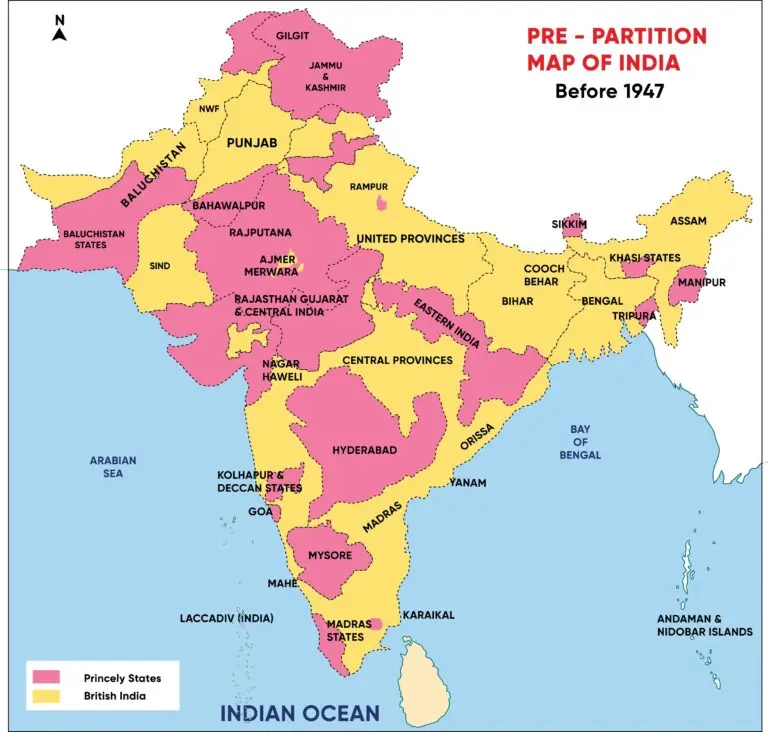Partition of India

Table of Contents
Partition of India Overview
The Partition of India refers to the division of British India into two separate nations, India and Pakistan, in 1947. It was accompanied by widespread violence, displacement, and loss of life, as well as the largest mass migration in human history.
The division was a result of the Indian Independence Act of 1947, which granted independence to India and Pakistan and provided for the creation of two separate dominions based on religious lines: Hindu-majority India and Muslim-majority Pakistan. The partition was largely driven by religious and communal tensions between Hindus and Muslims, exacerbated by British colonial policies and the demands of nationalist movements.
The partition led to the displacement of millions of people, with Hindus and Sikhs migrating to India and Muslims migrating to Pakistan, resulting in sectarian violence, communal riots, and mass casualties.
Partition of India History
The Partition of India refers to the division of British India into two independent dominions, India and Pakistan, on August 14-15, 1947, marking the end of British colonial rule in the region.
It was a consequence of mounting tensions between the Hindu-majority Indian National Congress and the Muslim League, which sought a separate homeland for Muslims in South Asia.
The partition was accompanied by widespread violence, riots, and mass migrations, as millions of Hindus, Muslims, and Sikhs were displaced and forced to flee their homes to escape communal violence.
The Radcliffe Line, drawn by British lawyer Cyril Radcliffe, demarcated the boundary between India and Pakistan, dividing the Punjab and Bengal provinces along religious lines.
The separation resulted in the largest mass migration in human history, with an estimated 10-15 million people crossing the newly created borders in search of safety and belonging, leading to immense human suffering and loss of life.
The violence and bloodshed during the partition left a deep scar on the collective memory of the people of India and Pakistan, and the trauma of partition continues to affect subsequent generations to this day.
The division also led to the displacement of communities, the loss of cultural heritage, and the fragmentation of families, as people were uprooted from their ancestral homes and forced to start anew in unfamiliar territories.
This also sparked communal tensions and conflicts between India and Pakistan, including the First Kashmir War in 1947-48 and subsequent wars and border disputes over the decades.
The partition of India also had significant geopolitical implications, shaping the political landscape of South Asia and influencing regional politics, security dynamics, and international relations in the post-colonial era.
Despite the challenges and legacies of partition, India and Pakistan have made efforts to foster peace, cooperation, and reconciliation, albeit with ongoing tensions and unresolved issues, such as the Kashmir conflict.
Related Links
Colonialism
Imperialism
NATO
Suez Canal